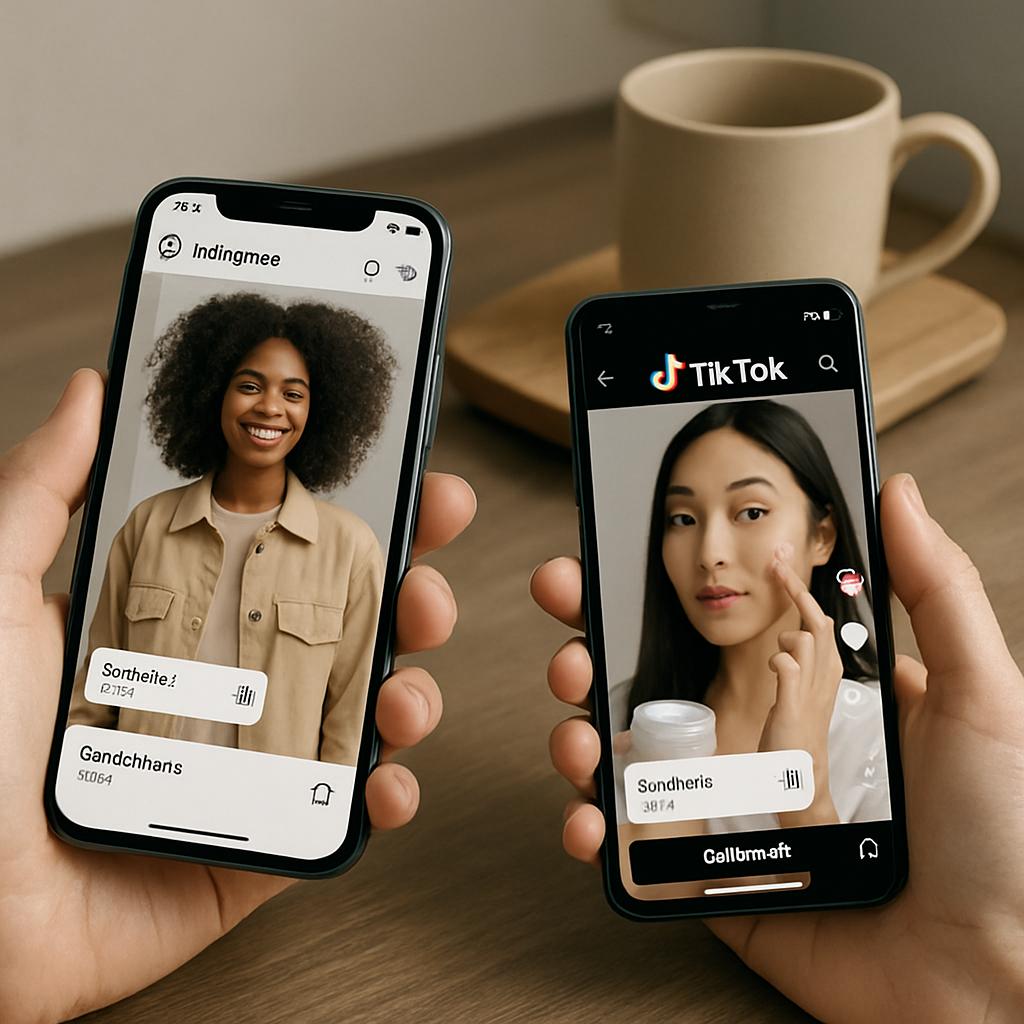Social media used to be a place to catch up with friends or watch a short video between meetings. Now it has quietly become a storefront, a discovery engine, and a checkout counter all at once. Platforms such as Instagram and TikTok are steering how people discover, trust, and buy products—often in ways retailers and marketers did not expect.
- The rise of social commerce: from discovery to purchase
- Why Instagram and TikTok matter (and how they differ)
- Features that reshape shopping behaviour
- Live commerce and short-form video: urgency meets discovery
- How consumer psychology is changing
- Practical consequences for brands and retailers
- Direct-to-consumer revival and channel strategy
- Measurement, attribution, and the data dilemma
- Privacy, regulation, and platform responsibility
- Design and UX best practices for social commerce
- Real-life examples and lessons from the field
- Emerging platforms and the road beyond Instagram and TikTok
- What to watch next
- Practical checklist for brands starting on social commerce
The rise of social commerce: from discovery to purchase

Social commerce blurs the lines between browsing and buying. Where e-commerce historically relied on search and category pages, social apps place products inside feeds, stories, and live streams—contextualized by people you follow or influencers you trust.
That shift shortens the customer journey. Instead of clicking out to a website, tapping a product tag, watching a short demo, and completing a purchase can happen in a handful of interactions within the same app. For many consumers this feels more natural than the older, separate steps of search and checkout.
Why Instagram and TikTok matter (and how they differ)
Instagram grew from photo-sharing to an ecosystem of shops, shoppable posts, Reels, and checkout features. It emphasizes curated visual aesthetics, polished brand presences, and a mix of creator and merchant content.
TikTok, in contrast, is built on fast-paced, authentic video and virality. Its algorithm surfaces novel items quickly, meaning small brands or single videos can generate enormous spikes in demand almost overnight. TikTok’s approach favors spontaneity and cultural relevance over aesthetic consistency.
| Feature | TikTok | |
|---|---|---|
| Content style | Curated, visual, brand-oriented | Authentic, trend-driven, short-form video |
| Discovery mechanism | Explore tab, hashtags, influencers | For You algorithm, trends, sound-based discovery |
| Commerce tools | Shops, shoppable tags, checkout | Creator marketplaces, live commerce, in-app links |
Features that reshape shopping behaviour
Several specific tools have nudged behavior toward social-first shopping. Shoppable tags turn a casual scroll into a conversion opportunity. In-app checkout removes friction by keeping the payment flow inside the platform. Live commerce creates urgency with limited-stock drops and real-time Q&A.
Creators and micro-influencers play a pivotal role. Their product recommendations act as a modern form of word-of-mouth, and audiences often perceive them as more relatable than traditional ads. That trust drives faster decisions: people buy because someone they follow showed how useful the product is in real life.
Live commerce and short-form video: urgency meets discovery
Live streaming introduces elements of time-limited offers and real-time social proof. When viewers see others buying or asking questions, FOMO and social validation combine to accelerate purchasing decisions. Brands can replicate showroom interaction at scale.
Short-form video, meanwhile, excels at showing a product in use. A 20-second clip demonstrating a hack or transformation can outperform a static ad because it answers the viewer’s “Will this work for me?” faster than long-form content. These quick demonstrations lower perceived risk and make impulse purchases more likely.
How consumer psychology is changing
Social commerce has nudged behavioral shifts that are subtle but persistent. People increasingly expect immediacy—if something looks interesting they want a fast path to buy it. The cognitive load of comparing prices and reading long reviews has declined in importance compared to social validation and relatable demos.
Social proof now includes live comments, creator endorsements, and visible engagement metrics. That layered validation can replace traditional trust signals like brand history or professional reviews. For younger demographics especially, a product’s popularity on a platform can be its primary credential.
Practical consequences for brands and retailers
Brands can no longer rely solely on search-engine optimization or direct mail; they must be fluent in short-form storytelling and creator partnerships. For many retailers, social platforms have become discovery funnels that require different creative formats and pacing than legacy channels.
Smaller sellers benefit from lower barriers to entry. A single viral video can sell out inventory overnight, which is a double-edged sword: great for visibility, challenging for fulfillment and customer service. Companies that pair nimble operations with strong social creative have a clear advantage.
Direct-to-consumer revival and channel strategy
Social commerce favors direct relationships. Brands that sell directly through social channels own the customer moment and the data, rather than ceding it to marketplaces. This changes how companies think about loyalty, retention, and repeat purchases.
At the same time, multichannel thinking remains important. A presence on Instagram and TikTok isn’t a substitute for an effective website or email program; it complements those assets and can drive traffic back to owned platforms when appropriate.
Measurement, attribution, and the data dilemma
Tracking the impact of social commerce can be messy. Platform-driven conversions often happen in-app and cross-device behavior muddies attribution models. Traditional last-click metrics underestimate the role these platforms play in discovery and influence.
Marketers must combine qualitative signals—sentiment, creator feedback, and community responses—with quantitative data like conversion lift tests and incrementality studies. Investing in proper tracking and testing frameworks will separate hopeful storytelling from scalable strategies.
Privacy, regulation, and platform responsibility
As social platforms collect more commerce data, privacy concerns intensify. Changes to third-party tracking and stricter data rules require advertisers to adapt measurement approaches and reduced reliance on pixel-based attribution.
Platforms are also under pressure to reduce fraudulent listings and improve transaction protections. Trust remains a fragile commodity; platforms that prioritize safety and clear purchase experiences will retain both consumers and high-quality merchants.
Design and UX best practices for social commerce
Effective social shopping experiences are fast, informative, and respectful of the user’s attention. Product content should answer the main buyer questions within the first few seconds of a clip: what it does, how it’s used, and why it’s worth buying now.
- Lead with demonstration: show the product in action early.
- Leverage creator authenticity: customers respond to real-use cases.
- Make buying easy: minimize taps to checkout and be transparent about shipping.
- Use strong microcopy: clear CTAs and concise product benefits matter.
Real-life examples and lessons from the field
I worked on a campaign where a small cosmetics brand partnered with three niche creators for short tutorials. One creator’s casual five-minute demo generated a week’s worth of web traffic and a sellout in 48 hours. The lesson was simple: relatable context, not glossy production, drove conversions.
Another example involved a furniture company testing Instagram Live for a product launch. Hosting a designer to answer live questions reduced return rates because buyers had a clearer sense of scale and materials before purchasing. Interactivity reduced post-purchase uncertainty.
Emerging platforms and the road beyond Instagram and TikTok

Social commerce isn’t limited to the two big players. Pinterest, Snapchat, and even messaging apps like WhatsApp and WeChat are experimenting with shoppable surfaces, AR try-ons, and conversational commerce. Each platform introduces a different flavor of discovery and purchase intent.
Augmented reality is especially promising for products where fit or look matters—eyewear, furniture, or cosmetics. When buyers can virtually try an item and then complete a purchase without leaving the app, confidence rises and returns fall.
What to watch next
Expect commerce features to become more native and creative tools to further collapse the distance between inspiration and purchase. At the same time, expect competition among platforms to bring better integration for creators, clearer monetization paths, and stronger consumer protections.
Retailers that invest in content-first teams and robust operations—logistics, customer service, and fulfillment—will capture the upside of episodic virality without being overwhelmed by it. Scalability is as much an operational challenge as a marketing one.
Practical checklist for brands starting on social commerce
Start small and iterate. Test short-form formats, partner with micro-influencers, and run controlled experiments around in-app checkout versus redirected sales. Measure results with incrementality tests rather than relying solely on platform dashboards.
- Create a content calendar aligned with trends and product drops.
- Partner with creators for authentic demonstrations and reviews.
- Optimize product pages for mobile and integrate clear CTAs.
- Invest in customer support that can handle fast surges in demand.
How social commerce is reshaping shopping behaviour on Instagram, TikTok and beyond is not a short-term fad; it’s a structural change in how discovery and buying interlock. Platforms will continue to refine features, and consumer expectations will evolve accordingly.
If you want to dive deeper into trends, case studies, and practical guides on adapting to this new landscape, visit https://news-ads.com/ and explore the other materials on our site.







